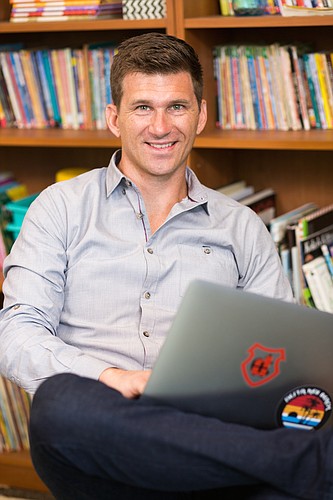- December 6, 2025
-
-
Loading

Loading

Before Dealers United CEO Pete Petersen set up a system for filtering his emails, he received 400 to 500 emails a day, easy. Now, he says, about 20 emails make it to him.
“The first thing I always say is hit ‘unsubscribe’ on everything that doesn’t matter to you,” Petersen says.
He also read online articles about implementing Gmail filter rules and copied the rules for his own inbox. “Your No. 1 investment you should make is learning the tools you use every day on the job,” he says. “Find someone else you think is really productive, and watch how they work.”
‘Find someone else you think is really productive, and watch how they work.’ — Pete Petersen, Dealers United
His filter system looks for words, such as “unsubscribe” or “update,” and segregates promotional emails and newsletters into separate folders. Then he has a choice of going into the folders to look at those emails — or not.
By taking control, Petersen drastically cut down on his email load. He says, “Take that time to reanalyze: ‘What are my inbox rules? Can I be better with it?’”
Petersen says most people receive two main types of emails — internal and external. Most people rely on email to manage communication with people inside their company. Sarasota-based Dealers United uses email for communication with customers but uses the messaging platform Slack for internal communication. “It limits the number of true external things you need to respond to once you declutter, and you train your staff to use systems like Slack,” he says.
Another key for Petersen is batching emails — answering them at certain times, usually before he gets to the office, at lunch and at the end of the day. “My job is not to be in email all day as an owner,” he says.
To cut down on email chains to schedule meetings and other appointments, he uses scheduling software Calendly. “I don’t have time to go back and forth,” he says. “I always look for ways to not have to rely on email.”
Petersen suggests setting a specific goal for reducing time spent on email. If someone spends two hours a day on email, a goal could be, “How can I spend less than 20 minutes a day on email?” he says. “How can I get there in the next six months?” Then start shaving off time. “It’s freed me to be so much more productive,” Petersen says.
Charlie Terenzio, director of earned media strategy for Sarasota-based Newswire, likewise seeks to avoid email when possible. “Talking face to face is kind of a lost art,” Terenzio says. “By having conversations in person, it could cut down on four, five or six emails. Walk over and talk to someone — it could save you half an hour or 45 minutes of your day.”
Terenzio has implemented several other strategies to reduce email time and maintain focus, too.
When he started his career, he always had email up and felt pressure to respond right away. “Whatever came in moved to the top of my to-do list,” he says. “Using email as a to-do list and starting at the top of your inbox is going to overwhelm you, mess up all your priorities and distract you from whatever’s important.”
Now Terenzio doesn’t let email run his schedule. “I try to focus on actually doing the day-to-day tasks I have and prioritize them over checking the emails,” he says.
To cut down on emails, Newswire, like Dealers United, uses Slack for internal communication. “With Slack, we can easily go back and forth in a few sentences and work out a solution we’re trying to get to,” Terenzio says.
He also has a system of folders and tags that allow him to segment unread emails into categories, including messages that require a response and messages that are informational. He quickly deletes junk emails so they don’t clutter up his inbox. “From there, once I’ve got the ones that are action items, I close out email so it’s not distracting me through the day,” he says. “It’s taken a lot of change to make sure email doesn’t run my life.”
Being better in business sometimes requires a road map to figure out some thorny issues. Click the links below to read more from the Business Observer’s annual how-to guide: